#Bomber Squadron
Text
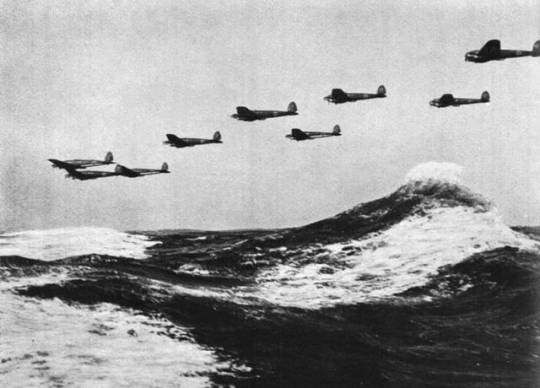
"THE SOUND OF DISTANT AIRCRAFT GROWS LOUDER AND LOUDER...!"
PIC(S) INFO: Spotlight on a reportedly composite photograph of German Heinkel He 111 bombers over the English Channel, flying low in order to avoid all possible British radar frequencies, c. 1940.
[Who caught my 1981 DISCHARGE reference? War is a black hole to avoid!]
Source: www.reddit.com/r/WWIIplanes/comments/111q7fb.
#German Heinkel He 111 bombers#WWII#War photography#Luftwaffe Bombers#German Luftwaffe#Bomber Squadron#Battle of Britain#Luftwaffe#1940s#English Channel#Military history#German Bombers#1940#Bombers#Heinkel He 111 bombers#World War 2#War history#Composite photography#Forties#40s#Battle of Britain 1940#World War II#Heinkel Bombers#Nazi Germany#Photography#Aviation
23 notes
·
View notes
Text

Réarmement d'un bombardier B-29 Superfortress du 882e Escadron de bombardement du 500e Groupe de bombardement – Guerre du Pacifique – Isley Field – Saipan – Iles Mariannes – Juillet 1945
#WWII#guerre du pacifique#pacific war#bombardements stratégiques#strategic bombing#armée de l'air americaine#united states army air forces#USAAF#882nd Bombardment Squadron#500th Bombardment Group#aviation militaire#military aviation#bombardier#bomber#bombardier lourd#heavy bomber#boeing B-29 Superfortress#B-29 Superfortress#superfortress#isley field#mariana islands#iles mariannes#07/1945#1945
158 notes
·
View notes
Photo
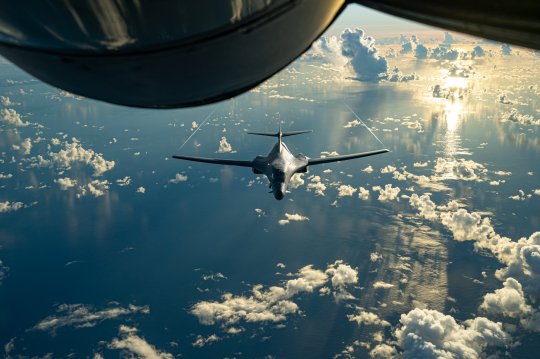



Lancer // United States Air Force
#United States Air Force#U.S. Air Force#USAF#B-1#B-1 Lancer#Lancer#bomber#Rockwell#Rockwell International#heavy bomber#Boeing#refueling#506th Expeditionary Air Refueling Squadron#B-1B Lancer#B-1B#34th Expeditionary Bomb Squadron#Pacific Ocean#Indo-Pacific#military#armed forces#milblr#aircraft#Master Sgt. Nicholas Priest
227 notes
·
View notes
Text

Nose art on Boeing B-17G Flying Fortress 'The Shape' (42-31891). This bomber was of the 401st Bomb Group, 412th Bomb Squadron, 8th Air Force.
Photographed in a base in England, on May 8, 1944.
History on this B-17: "Delivered Cheyenne 31/12/43; Kearney 12/1/44; Assigned 612BS/401BG [SC-P] Deenethorpe 15/2/44; Returned to the USA 121 BU Bradley 1/6/45; 4168 Base Unit, South Plains, Texas 8/6/45; Reconstruction Finance Corporation (sold for scrap metal in USA) Kingman 10/12/45. Completed 88 missions. Fate: Returned to the USA (01 June 1945)."
Information from b17flyingfortress.de: link
(U.S. Air Force Number A65643AC)
NARA: 204993836
#Boeing B-17 Flying Fortress#B-17#bomber#May#1944#401st Bomb Group#412th Bomb Squadron#8th Air Force#B-17G#United States Army Air Corps#US Army Air Corps#Army Air Corps#Air Corps#USAAC#World War II#World War 2#WWII#WW2#WWII History#History#Military History#nose art#my post
30 notes
·
View notes
Text
Rougham Tower Car Show 2024 (part 1)
I just had a busy weekend with a friend of mine dropping by to try out some new car detailing products which I will be reviewing shortly. Saturday’s weather was intermittent sun with the odd chilly spell, so Craig and I broke the usual detailing don’t rules where we cleaned my car in the bright sunny spells with the car being warm to the touch and not in the shade. The snow foam episode was…

View On WordPress
#B-17 Bomber squadrons#Buff the Ruff 2024#Bury Retro Car Club#Car photographs#car show#classic car show#Dug out#ford#ford mustang#German SS trench#Mustang#One man and his Mustang#Rougham Airfield#Rougham Towers Museum
2 notes
·
View notes
Text
Me waiting for Andor, the smartest show in Star Wars, to show off Star Destroyers:

#so many other entries have FAILED#squadrons is exempt from criticism#but kenobi? the last jedi? rebels?#all underwhelming#resistance did pretty well#I could probably make a tier list#again: these are BOSS MONSTERS#rogue one was also pretty great#because yeah a whole flight of bombers launching torpedoes into you IS going to shut you down#and ramming another one into you WILL BLOW YOU UP#star wars#andor
19 notes
·
View notes
Text
Replaying Star Wars Squadrons | Part 3
youtube
#star wars#star wars squadrons#squadrons#star wars games#gaming live#gaming livestream#gaming#youtube live stream#livestream#live#titan squadron#vanguard squadron#x-wing#tie fighter#y wing#a wing#u-wing#tie interceptor#tie bomber#tie reaper#Youtube
3 notes
·
View notes
Video
Weekend Star Wars Pickups by Darth Ray
Via Flickr:
Weekend Star Wars Pickups * Micro Galaxy Squadron - Series 3 Crumb Bomber Gunship * Larger Sized Grugu Action Figure * Used Hot Wheels Character Car Case
#Weekend#Star#Wars#Pickups#Star Wars#Micro#Galaxy#Squadron#Series#3#Crumb#Bomber#Gunship#Micro Galaxy Squadron#Series 3#Crumb Bomber#Larger#Sized#Grugu#Action#Figure#Hot#Wheels#Character#Car#Case#Hot Wheels#Character Car#flickr
1 note
·
View note
Text
Punk 101: A History of Battle Jackets
Battle Jackets have a long and interesting history in general, not limited only to punk. Today we see them as a reflection of the wearer, they are a form of self expression and affiliation.
Battle jackets can trace their origins back to WWII American pilots who would decorate their flight suits and bomber jackets with their squadron's insignia patches. They were jackets that allowed pilots to easily recognize each other and instilled a sense of pride and community in their owners. This is also where the term 'battle jacket' comes from.
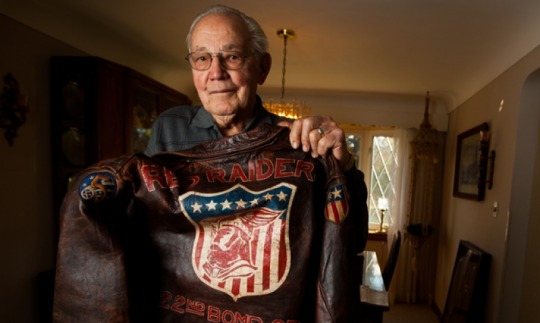

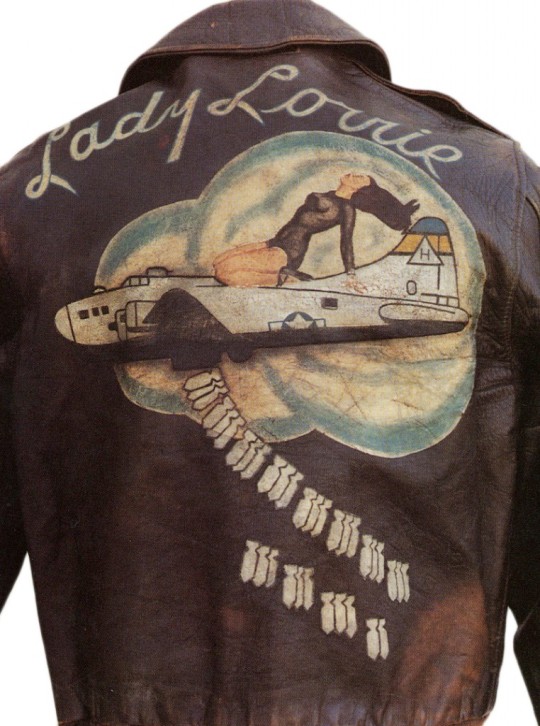
After the war was over, pilots returned home and many found joy in the speed and excitement of motorcycles. Biker clubs were formed, and thus, biker culture as well. Pilots often used their bomber jackets while riding because of the protection they offered, though the sleeves were usually removed due to how they restricted movement. Jackets got decorated with club/gang logos to represent their wearer's affiliation, much like the insignia patches. As biker clubs grew, members without a pilot history often used leather or denim jackets to showcase their affiliations. There is a LOT more to biker jacket history, but this is what's really relevant to punk jackets.
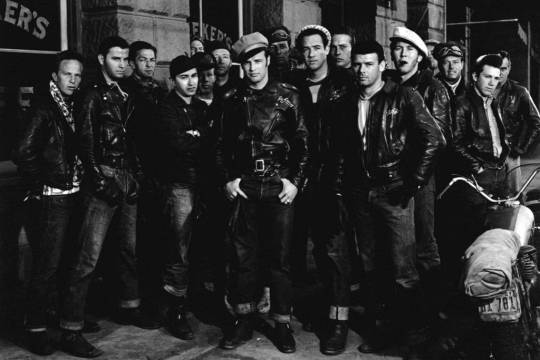
In the 60s, two different cultures evolved in the UK. The first is The Mods, known for listening to modern jazz and riding scooters (supposedly their name comes from the modern jazz thing. I would not have been surprised if it was from 'modification' considering the seeming obsession to keep adding mirrors and lights to their scooters). The other group was The Rockers who were known for listening to 50s rock and riding motorcycles. While the groups strongly disliked each other, they both decorated their jackets in ways that influenced punk's jacket scene. The Mods often added pictures, paintings, and patches to theirs, while The Rockers were more likely to be seen sporting spikes and studs. (Not to say that those things were strictly limited to each side - just what was more common)
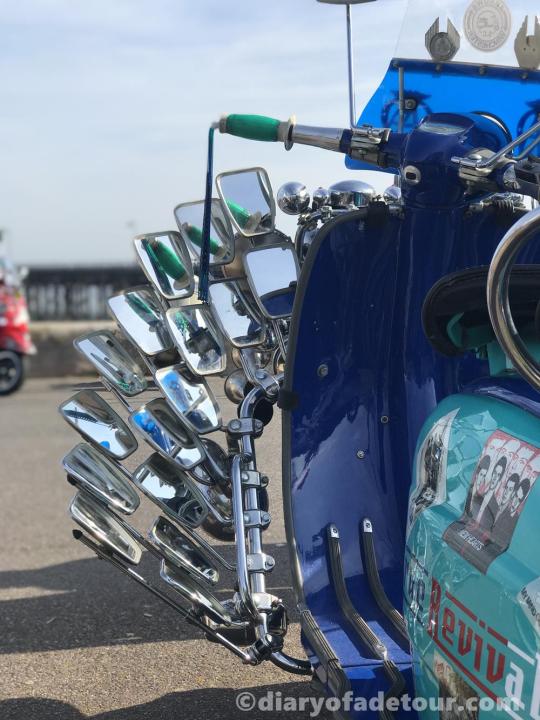
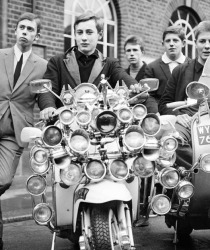
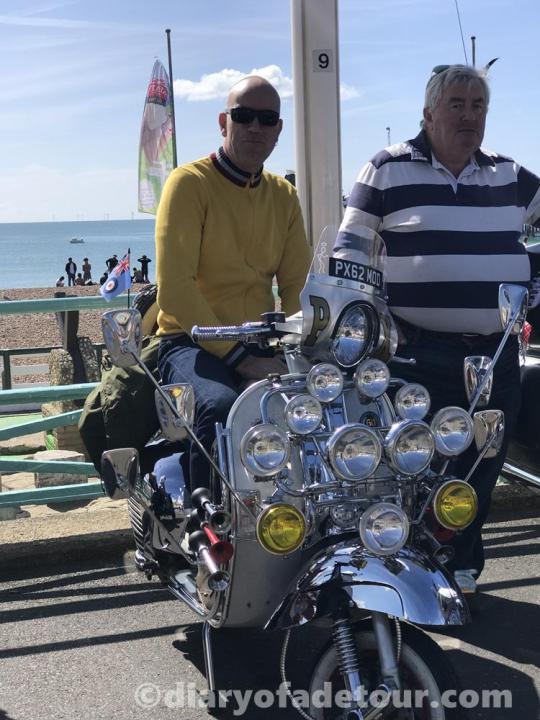

The following decade (the 70s), the two branches came together as various music subgenres collided and formed. Punk was among the genres formed, and the culture surrounding it was one of the first non-gang or club related groups to decorate their jackets. Taking influence from both The Mods and The Rockers, the characteristic punk look was formed, and intended to be a Fuck You to societal norms. In the earliest days, punk jackets were mostly covered in band patches, much like modern heavy metal jackets. As punk evolved into what we know it as today, with notes of anti-establishment and anarchy, it became more common to see political patches right along side the band ones.



Today's jackets are a personal statement. the bands you like, your interests, political statements. They are a symbol of individuality and rebellion against society. They are a physical representation of YOU and your history with punk culture. This is why it is so important within punk culture to make your own jacket or have someone help who can customize it to you. You are not a generic human off the rack, you have lived a life, had your own battles, have your own personality, and have your own history. A premade, mass produced jacket won't showcase any of that or really truly represent the individuality of 'you'.
#punk 101#I honestly intended this to be more 'how to make' and 'things to know' but I got a little to into the history research#i'm sorry i'll do another one on that stuff#just not tonight I'm tired#battle jacket#patch jacket#punk jacket
2K notes
·
View notes
Text
Kenley Scramble: The Definitive History of the RAF Airfield 1917-1940 :: Richard C. Smith
Kenley Scramble: The Definitive History of the RAF Airfield 1917-1940 :: Richard C. Smith

View On WordPress
#24 squadron#615 squadron#978-0-9557-1809-0#aerial actions#aerodrome layouts#aeroplane#air force#aircraft#books by richard c smith#bristol bulldog aircraft#british military history#british war department#fairey battle aircraft#gloster gamecocks#handley page bomber aircraft#hawker hurricanes#hector biplanes#raf kenley#rfc pilots#royal air force history#signed books#world war 2#world war ii#world war two
0 notes
Text

Le Capitaine John F. Adams du Marine Scout Bombing Squadron 231 (VMSB 231) sur son Douglas SBD-5 Dauntless – Guerre du Pacifique – Ile Dalop – Atoll de Majuro – Iles Marshall – Août 1944
©National Archives and Records Administration - 80-G-401047
#WWII#guerre du Pacifique#pacific war#corps des marines#us marine corps#usmc#marine scout bombing squadron 231#vmsb 231#john f. adams#aviation militaire#military aviation#bombardier en piqué#dive bomber#douglas sbd dauntless#sbd dauntless#dauntless#ile dalop#dalop island#atoll de majuro#majuro islands#iles marshall#marshall islands#08/1944#1944
29 notes
·
View notes
Text

Waist gunner Staff Sergeant Frank Lusic poses in front of B-17F-55-BO 42-29524 'Meathound' of 306th Bomb Group, 423rd Bomb Squadron. Thurleigh. Beds. 1943
➤➤ B-17 VIDEO: https://youtu.be/F03u5GrIuk4
#History #bomber #B17 #WW2 #Colorized #WWII #Squadron
#youtube#aircraft#airplane#aviation#dronescapes#military#ww2#wwii#documentary#aviation history#history#world history#military history#circa 1943#b 17 flying fortress#b 17#flying fortress#boeing#bomber#colorized#war photography#color photography
332 notes
·
View notes
Text

Flying Officer B.P. “Squirrel” Nutkin of 266 Squadron RAF, seen here in a Hawker Hurricane Mk I flown by 266 during the Fall of France.
As the British Expeditionary Force were driven back by Guderian’s Blitzkrieg, 266 was badly mauled while keeping Luftwaffe bombers away from the Dunkirk beaches, losing enough Hurricanes that it re-equipped with the Supermarine Spifire Mk Ia just in time for the Battle of Britain.
Nutkin, resisting what was already becoming known as "Spitfire Snobbery", was one of the last 266 Squadron pilots to convert from his Hurricane. This snapshot, therefore, must have been taken at some time in mid-June 1940, between the end of Operation Dynamo on 4th June and the official start of the Battle of Britain on 10th July.
*****
It was during the BEF’s final withdrawal from Dunkirk that Flying Officer Nutkin, already with two kills to his credit, made ace in an afternoon and won his first DFC.
He was section leader of Red Section - comprising himself, Pilot Officer Tom E. Brock and Pilot Officer J.R.M.E. Fisher - providing top cover for the evacuation, when on 2nd June 1940 they found themselves up-sun from a raid directed against several of the “Little Ships” (civilian vessels with volunteer crews).
Red Section executed a perfect “bounce” that caught the enemy completely off guard, six Luftwaffe aircraft were shot down, and Nutkin personally accounted for two Junkers Ju.87-B Stuka dive-bombers as well as one Messerschmitt Bf.109-E4 from their escort.


(Representative images, not actual footage)
“Squirrel” Nutkin finished his RAF service in 1946 with the rank of Wing Commander. It’s widely believed he was promoted no higher after saying “Nuts!” to Air Vice-Marshal Trafford Leigh-Mallory, even though this turned out not to have been an insult, merely a misheard comment about which bar snacks were running short in the Officers' Mess.
Regardless of explanation, Leigh-Mallory - always notoriously pompous about his own image and reputation - made a disparaging entry in Nutkin’s file and refused to amend it. His later death in an accident meant the unwarranted black mark was never deleted.
This didn't concern post-war fledgling new airline BEA (British European Airways), and Nutkin joined them directly he left the Air Force…

…going on to become one of their senior captains before transferring to Transatlantic service with BOAC (British Overseas Airways Corporation).
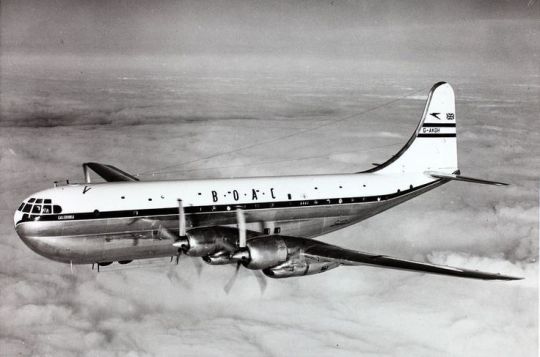
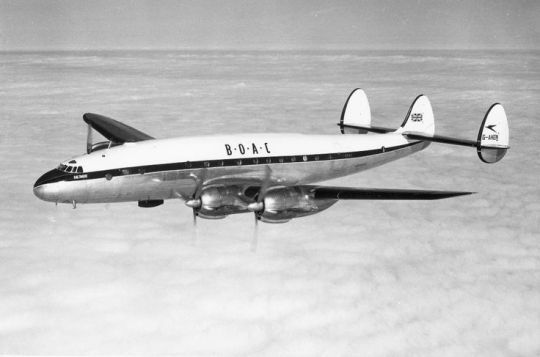
During a layover in New York he met and later married Cicely van Gopher of the New Hampshire van Gophers, and on retirement from flying made a fortune in forestry.
“Some people can’t see the wood for the trees, but for some reason I'm quite good at both.”
103 notes
·
View notes
Text
Rougham Tower Car Show 2024 (part 2)
Welcome back to the second part of the car show. I finished the last post (part 1), by saying there was a second hut, this one had a monstrous looking gun outside.
Inside were more mock ups of workshops, bunks and medical areas from the war, along with some displays of equipment and some empty ammunition shells.
There was section dedicated to the medical corp. which was represented by a lovely…

View On WordPress
#Air control tower#B-17 Bomber squadrons#car show#classic car show#ford#ford mustang#German SS trench#German WWII guard#hob nail boots#Mustang#One man and his Mustang#Rougham Airfield#Rougham Towers Museum
0 notes
Text
During Nuremberg Trial testimony, the prosecutor pressed Einsatzgruppen commander Otto Ohlendorf: “You were going out to shoot down defenseless people. Now, didn’t the question of the morality of that enter your mind?” Ohlendorf referred to the Allied bombings of Germany as a context:
I am not in a position to isolate this occurrence from the occurrences of 1943, 1944, and 1945 where with my own hands I took children and women out of the burning asphalt myself, and with my own hands I took big blocks of stone from the stomachs of pregnant women; and with my own eyes I saw 60,000 people die within 24 hours.
A judge immediately pointed out that his own killing spree preceded those bombings. But this would become known as the “Dresden defense,” to which Ohlendorf resorted still another time, in this exchange:
Ohlendorf: I have seen very many children killed in this war through air attacks, for the security of other nations, and orders were carried out to bomb, no matter whether many children were killed or not.
Q: Now, I think we are getting somewhere, Mr. Ohlendorf. You saw German children killed by Allied bombers and that is what you are referring to?
Ohlendorf: Yes, I have seen it.
Q: Do you attempt to draw a moral comparison between the bomber who drops bombs hoping that it will not kill children and yourself who shot children deliberately? Is that a fair moral comparison ?
Ohlendorf: I cannot imagine that those planes which systematically covered a city that was a fortified city, square meter for square meter, with incendiaries and explosive bombs and again with phosphorus bombs, and this done from block to block, and then as I have seen it in Dresden likewise the squares where the civilian population had fled to—that these men could possibly hope not to kill any civilian population, and no children.
Ohlendorf thought this defense so powerful that he invoked it yet another time:
The fact that individual men killed civilians face to face is looked upon as terrible and is pictured as specially gruesome because the order was clearly given to kill these people; but I cannot morally evaluate a deed any better, a deed which makes it possible, by pushing a button, to kill a much larger number of civilians, men, women, and children.
(The chief prosecutor, an American, called this particular iteration “exactly what a fanatical pseudo-intellectual SS-man might well believe.”)
At Nuremberg, this sort of tu quoque defense (“I shouldn’t be punished because they did it too”) wasn’t admissible. Still, in the verdict of the Einsatzgruppen Trial, the judges chose to refute it. “It was submitted,” the judges wrote, “that the defendants must be exonerated from the charge of killing civilian populations since every Allied nation brought about the death of noncombatants through the instrumentality of bombing.” The judges would have none of it:
A city is bombed for tactical purposes… it inevitably happens that nonmilitary persons are killed. This is an incident, a grave incident to be sure, but an unavoidable corollary of battle action. The civilians are not individualized. The bomb falls, it is aimed at the railroad yards, houses along the tracks are hit and many of their occupants killed. But that is entirely different, both in fact and in law, from an armed force marching up to these same railroad tracks, entering those houses abutting thereon, dragging out the men, women and children and shooting them.
The tribunal sentenced Ohlendorf to death. He was hanged in June 1951.
“In the last analysis”
Nuremberg enforced a fundamental distinction. All civilian lives are equal, but not so all ways of taking them. The deliberate and purposeful killing of civilians is a crime; not so the taking of civilian lives that is undesired, unintended, but unavoidable. The errors made by a bomber squadron cannot be deducted from the murders committed by a death squad. It’s a difference compounded many times over when those civilian men, women, and children are subjected to torture, rape, and mutilation before their murder. To borrow Khalidi’s phrase, “in the last analysis,” this distinction is what separates modern civilization from its predecessors.
More disturbing is the thought that it separates the contemporary West from its peers. Otto Ohlendorf and the regime he served did all they could to conceal their deeds from Western eyes. Nazi Germany still operated in a West founded on Enlightenment values. So massive a violation of a shared patrimony needed to be hidden from view.
In contrast, Hamas initially sought to publicize its deeds, assuming they would win applause, admiration, or at least tacit acceptance in the Arab and Muslim worlds. Here they succeeded beyond their expectations. The many millions who don’t share the West’s patrimony, and who know next to nothing about the Holocaust or Nuremberg, do see things as Khalidi says they see them. (So, too, does a sliver of alienated opinion in the West, where such views are cultivated and celebrated.)
Finally, and still more disturbing, is the fact that Ohlendorf’s defense has been revived to frame the massacre of Jews.
#Hamas#Palestine#Nuremberg trials#Dresden defense#Israel#leftist antisemitism#jumblr#war crimes#genocide#crimes against humanity
155 notes
·
View notes
Text

Crews of No 137 Squadron RAF pose with a mascot in front of their Whirlwind Mk I fighter bombers at RAF Manston, Kent. March 5, 1943.
168 notes
·
View notes
